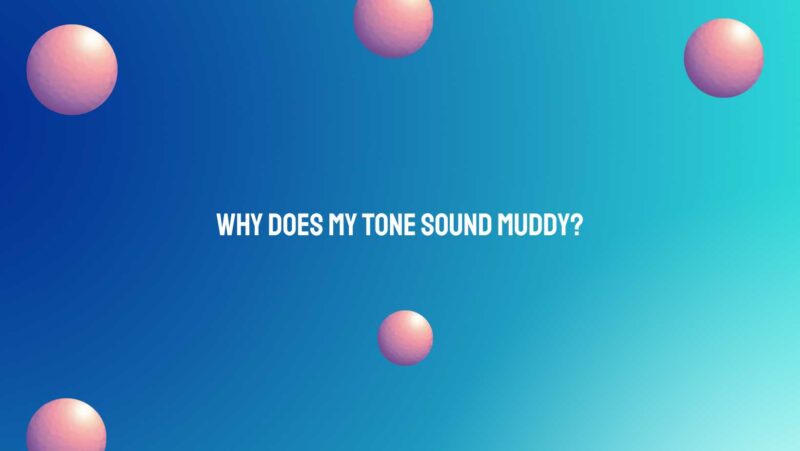As a guitarist, one of the most frustrating experiences can be dealing with a muddy guitar tone. A muddy tone lacks clarity, definition, and can make your playing sound less appealing. If you’ve ever wondered why your guitar tone sounds muddy, you’re not alone. In this comprehensive article, we’ll delve into the various factors that can contribute to a muddy guitar tone and offer practical solutions to help you achieve a clear and vibrant sound.
- Improper EQ Settings
One of the most common reasons for a muddy tone is improperly adjusted EQ settings on your amplifier or pedalboard. The EQ (equalization) controls, including bass, midrange, and treble, have a significant impact on your tone. If you have too much bass or mids and not enough treble, your sound can become muddy. To address this, experiment with EQ settings to find the right balance that suits your playing style and the room you’re in.
- Overly Distorted Gain
While distortion and overdrive are essential for many guitarists, excessive gain can lead to a muddy tone. Too much distortion can blur the definition between notes and chords, resulting in a muddled sound. To combat this issue, dial back the gain on your amplifier or pedal and find the right amount of distortion that maintains clarity while achieving the desired crunch or sustain.
- Inadequate Pickup Height Adjustment
The distance between your guitar’s pickups and strings affects your tone significantly. If your pickups are too close to the strings, they can overpower the sound and create muddiness. Conversely, if they are too far away, your tone may lack output and clarity. Experiment with pickup height adjustments to find the sweet spot that provides a clear and well-defined sound.
- Old or Worn Strings
The condition of your guitar strings plays a crucial role in your tone. Old or worn-out strings can lose their brightness and sustain, leading to a muddy sound. Regularly change your strings to maintain a crisp and vibrant tone. Experiment with different string gauges to find the ones that best suit your playing style.
- Room Acoustics
The environment in which you play can significantly affect your tone. Rooms with poor acoustics, such as excessive reverb or reflections, can make your guitar sound muddy. Consider adding acoustic treatment to your practice space or adjusting your amp settings to compensate for the room’s characteristics.
- Inadequate Playing Technique
Sometimes, the issue may not lie with your gear but with your playing technique. Sloppy fretting, improper picking, and insufficient palm muting can contribute to a muddy tone. Take time to practice and refine your technique, ensuring clean fretting, accurate picking, and effective use of dynamics.
- Low-Quality Cables and Connections
The quality of your instrument cables and connections matters more than you might think. Low-quality or damaged cables can introduce interference and signal loss, leading to a muddy tone. Invest in high-quality cables and regularly inspect them for wear and tear.
- Amplifier and Speaker Quality
The quality of your amplifier and speaker can have a profound impact on your tone. Cheap or subpar amplifiers and speakers may not reproduce your guitar’s sound accurately, resulting in muddiness. Consider upgrading to higher-quality gear if you’re serious about improving your tone.
- Effects Pedals and Signal Chain
If you use effects pedals in your signal chain, they can either enhance or muddy your tone, depending on their settings and order. Experiment with different pedal combinations and settings to find the right balance that preserves clarity while achieving the desired effects.
Conclusion
A muddy guitar tone can be frustrating, but with a bit of knowledge and experimentation, you can pinpoint the causes and apply the appropriate solutions to achieve a clear and vibrant sound. Remember that achieving the perfect tone is a journey that requires patience and a keen ear. By addressing the factors mentioned in this article, you’ll be well on your way to crafting a guitar tone that’s clear, defined, and distinctly your own.


